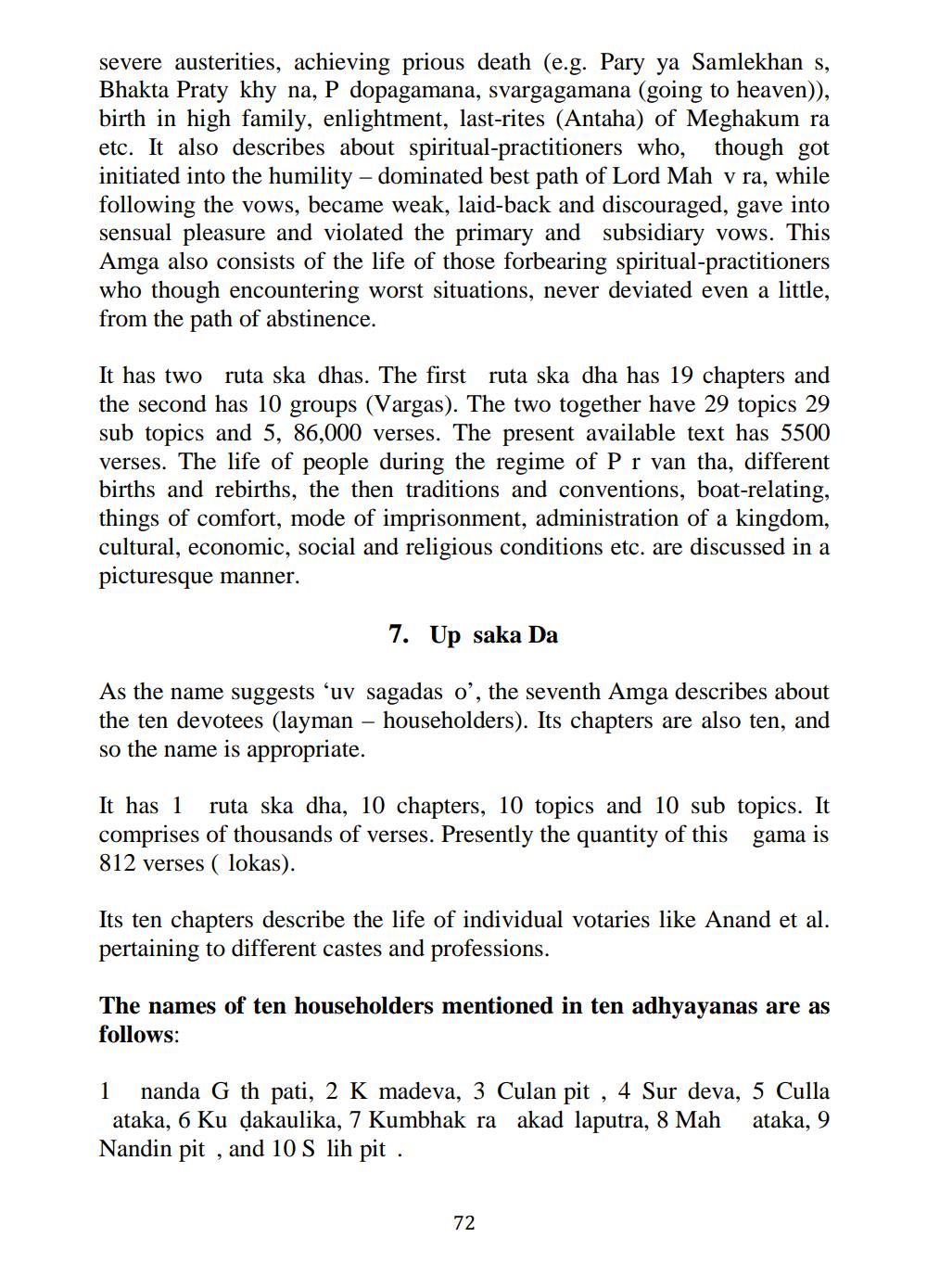________________
severe austerities, achieving prious death (e.g. Pary ya Samlekhan s, Bhakta Praty khy na, P dopagamana, svargagamana (going to heaven)), birth in high family, enlightment, last-rites (Antaha) of Meghakum ra etc. It also describes about spiritual-practitioners who, though got initiated into the humility - dominated best path of Lord Mah v ra, while following the vows, became weak, laid-back and discouraged, gave into sensual pleasure and violated the primary and subsidiary vows. This Amga also consists of the life of those forbearing spiritual-practitioners who though encountering worst situations, never deviated even a little, from the path of abstinence.
It has two ruta ska dhas. The first ruta ska dha has 19 chapters and the second has 10 groups (Vargas). The two together have 29 topics 29 sub topics and 5, 86,000 verses. The present available text has 5500 verses. The life of people during the regime of P r van tha, different births and rebirths, the then traditions and conventions, boat-relating, things of comfort, mode of imprisonment, administration of a kingdom, cultural, economic, social and religious conditions etc. are discussed in a picturesque manner.
7. Up saka Da
As the name suggests ‘uv sagadas o’, the seventh Amga describes about the ten devotees (layman - householders). Its chapters are also ten, and so the name is appropriate.
It has 1 ruta ska dha, 10 chapters, 10 topics and 10 sub topics. It comprises of thousands of verses. Presently the quantity of this gama is 812 verses ( lokas).
Its ten chapters describe the life of individual votaries like Anand et al. pertaining to different castes and professions.
The names of ten householders mentioned in ten adhyayanas are as follows:
1 nanda G th pati, 2 K madeva, 3 Culan pit , 4 Sur deva, 5 Culla
ataka, 6 Ku dakaulika, 7 Kumbhak ra akad laputra, 8 Mah ataka, 9 Nandin pit , and 10 S lih pit .
72




